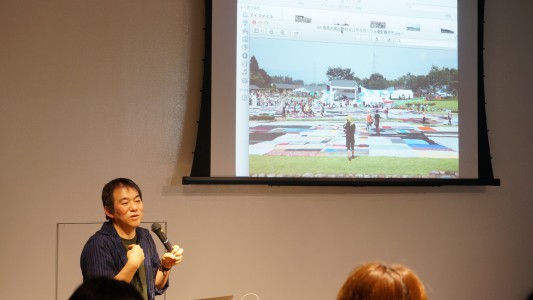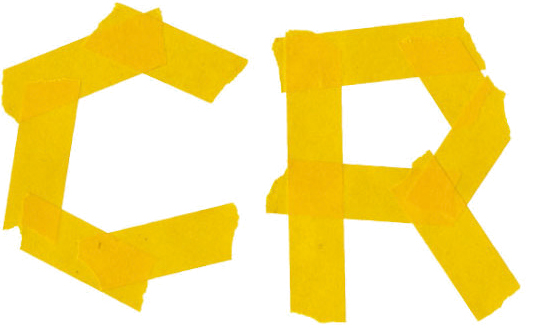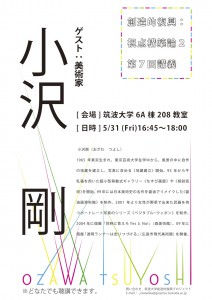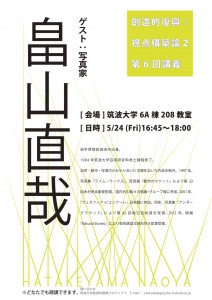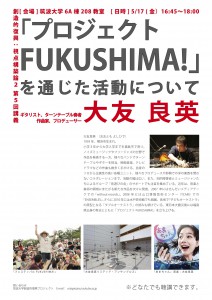For the 8th session of Creative Reconstruction: Vision Formulation 2, we were honored to welcome Mr. Momoyo Kaijima, associate professor at Tsukuba University and also architect, who introduced in his lecture “Archi+Aid”, a recovery support architects network. Archi+Aid organises summer camps and workshops mainly in the Oshika Peninsula, and is implementing projects making possible movement towards higher lands that would benefit the coastal areas in future times, and building “core houses”. Archi+Aid places importance on using local material for all the projects. It was for us a source of inspiration about how to lead projects that would relate to a feeling of pride for our own region.
Archiaid http://archiaid.org/
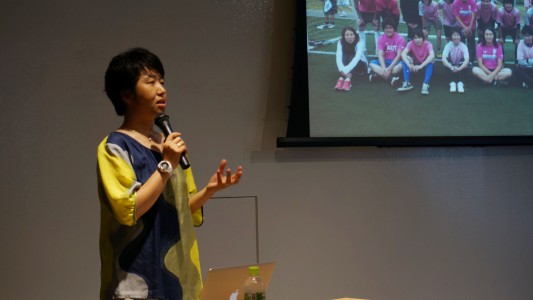
(Hashimoto)
A Creative Reconstruction: Vision Formulation 2, 9th session announcement and information about related exhibitions
For the 9th session of Creative Reconstruction: Vision Formulation 2, we are honored to welcome Mr. Jun Kitazawa, contemporary artist and director of Jun Kitazawa Office Yakumo. Mr. Kitazawa has been acting to create communities all over the country. In the aftermath of the disaster, he launched a project called “My Town Market,” whose concept was to create a “one-day handmade town” in the temporary housing.
“Creating communities”
Location : University of Tsukuba [Bldg 6A, Room 208]
Friday, June 14th @ 4:45pm〜6:00pm
Moreover, in order to anticipate the Vision Formulation 2 lecture, we are holding an exhibition that introduces Mr. Kitazawa’s activities. It will present the 3 projects : “My Town Market”, “Living Room” and “School after School Club”
“Jun Kitazawa Office Yakumo Project”
Location: University of Tsukuba [Bldg 6A, Entrance Gallery]
Tuesday, June 11th to Friday, June 14th, 10:00Am〜5:00pm
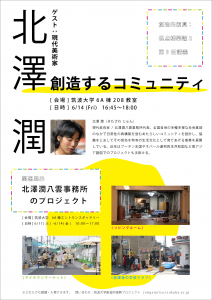
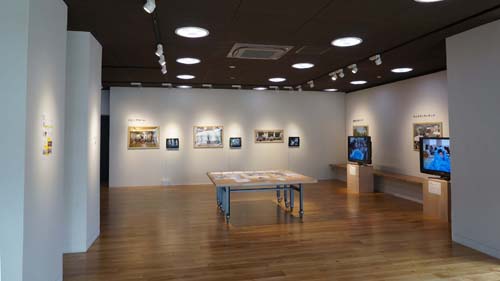
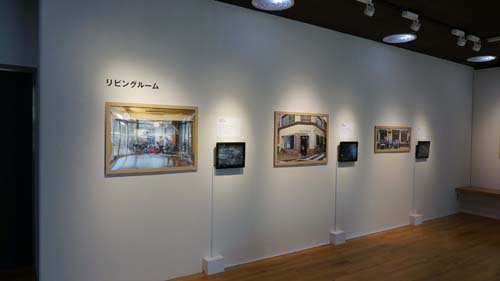
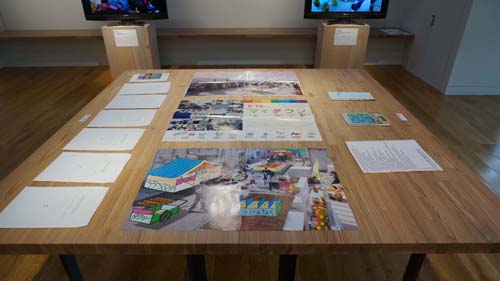
(Kataoka)
Inspection tour in Sanriku
This year too, on June 1st and 2nd, we organised an inspection tour of two days in Sanriku. We wanted to see with our own eyes how the situation was in the stricken areas two years after the disaster. This year, 40 people took part in the tour, students and teachers all together.
On the first day, we visited the “recovery shopping street” of Ishinomaki city, and the participants had lunch in the shopping street restaurants or at the cafeterias run by students. Then we headed to the district of Kadowaki, a coastal area of Ishinomaki, visited the Kadowaki primary school, and also “Don’t give up Ishinomaki / ARIGATOU House”, and we got a chance to ask Mr Ogata, in charge of the “ARIGATOU House” about his experience of the disaster. We will remember that he feels that there is a gap between the reality of the situation and what is broadcast, and also him saying, “Rather than next year or the year after, I want to know what tomorrow will be like.” Compared to last year, the mountains of debris had shrunk, the ruins of the buildings that were taken away by the tsunami were replaced by wide grass fields and empty lands, and the absence of people left us with a strong impression of sadness.
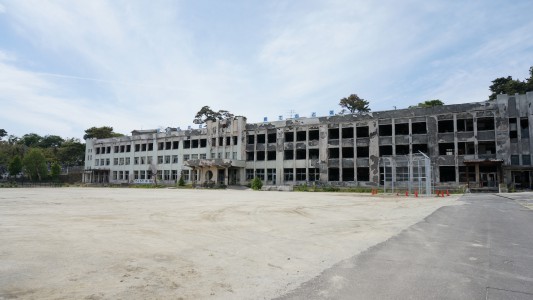
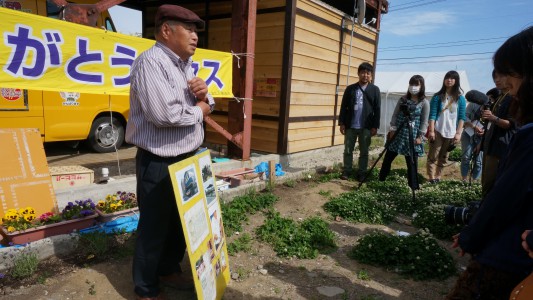
After we entered the Oshika Peninsula where we were to stay, we heard from the people that are carrying volunteer activities in the area, about the state of confusion just after the disaster, and the current problem of decrease of population, and how this issue is addressed.
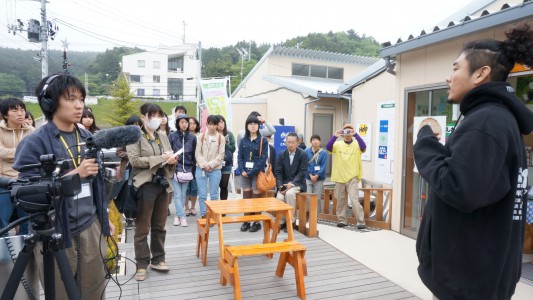
After dining at the hotel, each participant talked about his/her impression of the first day. Some said “Even though I’m here, I still couldn’t believe it was true. I felt how difficult it is to imagine. ” “I felt helplessness.”, “I was able to verify with my own eyes, and not through the media.” and expressed feelings of perplexion, and it was a very constructive time for everybody to be able to share opinions.
On the second day, we first visited Onagawacho, and saw the building that the tsunami had knocked down and left as a mere iron frame. We then went to the “recovery shopping street” of the Minami-Sanriku district, had a nice local lunch, and gathered again at the temporary housing of Prof. Ando.
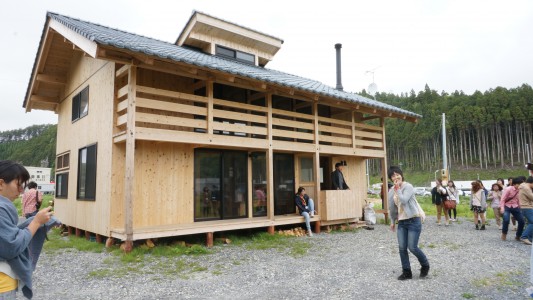
Finally, we visited the production place of Ono-kun from Higashi-Matsushima, and the sight of the temporary housing inhabitants happily making the dolls freed us from the feeling of helplessness we had the first day, giving us hope that recovery can be reached if we started by whatever little things we can do.
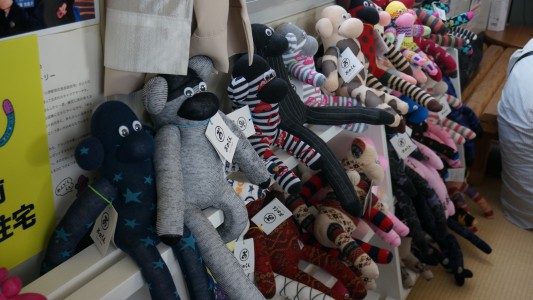
We would like to thank all the people that helped us with this trip to Sanriku and told us precious stories and useful advice. I hope that the way the participant students will share what they saw with their own eyes during this trip with the rest of the team, will help push further our activities.
(Hashimoto)
A Creative Reconstruction: Vision Formulation 2, 7th session
For the 7th session of Creative Reconstruction: Vision Formulation, we were honored to welcome the artist, Mr. Tsuyoshi Ozawa, and to listen to his lecture about his activities in the aftermath of the disaster and his views on Fukushima. Hoping to bring joy to the children, Mr. Ozawa held kite flying workshops at the shelters and provided children who cannot play outside because of the radiation with spaces for playing inside. Also, in order to create an artwork that could diffuse information from Fukushima toward everywhere in the world, he went to Ghana and made this artwork linking Africa and Fukushima. He told us about his trip there. The artwork is presently exhibited at the Yokohama Creative City Center. The exhibition goes on until 9th of June. Not to be missed!
“Tsuyoshi Ozawa, Masakatsu Takagi, go to Africa”
http://www.yaf.or.jp/ycc/
(Hashimoto)
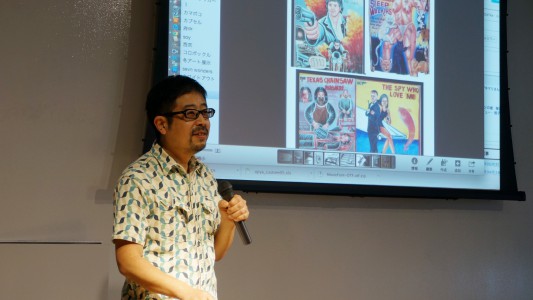
Announcement : A Creative Reconstruction: Vision Formulation 2, 8th session
For the 8th session of Creative Reconstruction: Vision Formulation, we are honored to welcome Prof. Momoyo Kaijima, associate professor at Tsukuba University and also architect. After the disaster, Prof. Kaijima participated in a network of architects for relief and recovery called Archi+Aid, and helped regions such as Momonoura in the Oshika Peninsula, Tsukinoura, and the area of Samuraihama. He will tell us about his activities, and everybody is welcome to join the lecture.
Location : University of Tsukuba [Bldg 6A, Room 208]
Friday, June 7th @ 4:45pm〜6:00pm
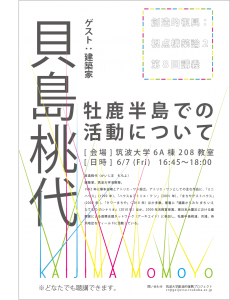
(Kataoka)
Announcement: A Creative Reconstruction: Vision Formulation 2, 7th Session
A Creative Reconstruction: Vision Formulation 2, 6th Session
For the sixth session of Vision Formulation 2, we were happy to welcome photographer Naoya Hatakeyama to present a lecture for us about his own experience after the earthquake and his photography work. He told us that he tries to address the question of where the boundary between truth and lies exists, using the medium of photography to face this. He said that the most intrinsic aspect of working in photography is examining problems of reality, and he wants to share the feelings of being unsettled and uncomfortable that we all experience, through his photographs. It was very clear that his works lie side by side with his own experiences. His lecture provoked questions that resonate in our daily lives, and the students who attended seemed to be given a lot of food for thought. (Hashimoto)
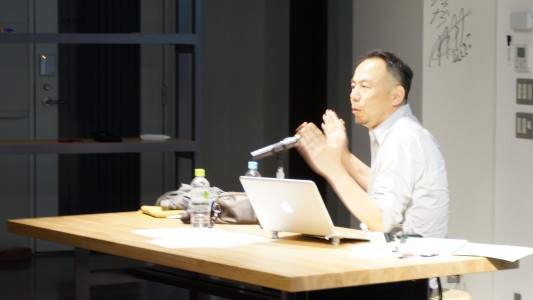
Announcement: A Creative Reconstruction: Vision Formulation 2, 6th Session
A Creative Reconstruction: Vision Formulation 2, 5th Session
On Friday, May 17, we had the pleasure of welcoming Yoshihide Otomo (guitarist, turntable artist, composer, and producer) to present a lecture entitled “Activities for Project FUKUSHIMA!” He spoke about how he set up this project to act as a middle ground to connect the people of Fukushima with those outside, and also told us about the festivals he has held, which included activities such as creating a huge patchwork cloth, a flag raising ceremony, and a bon odori dance festival. Participants in the festivals took part in whatever way they liked, through music, art, or dance, and it was wonderful to see how people with different viewpoints and ideas could come together. The lecture made it clear how much Mr. Otomo himself has enjoyed running this project. (Hashimoto)
